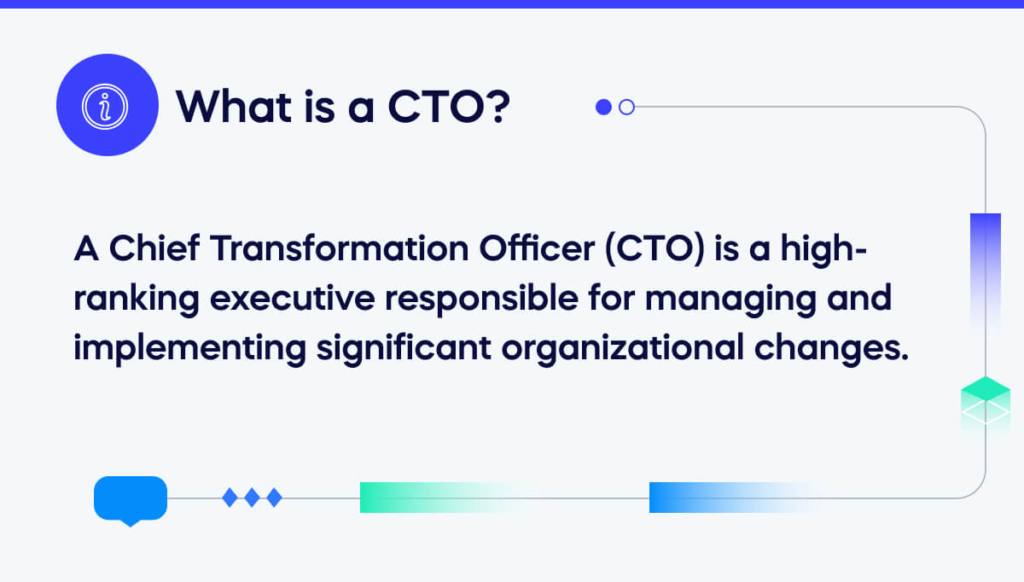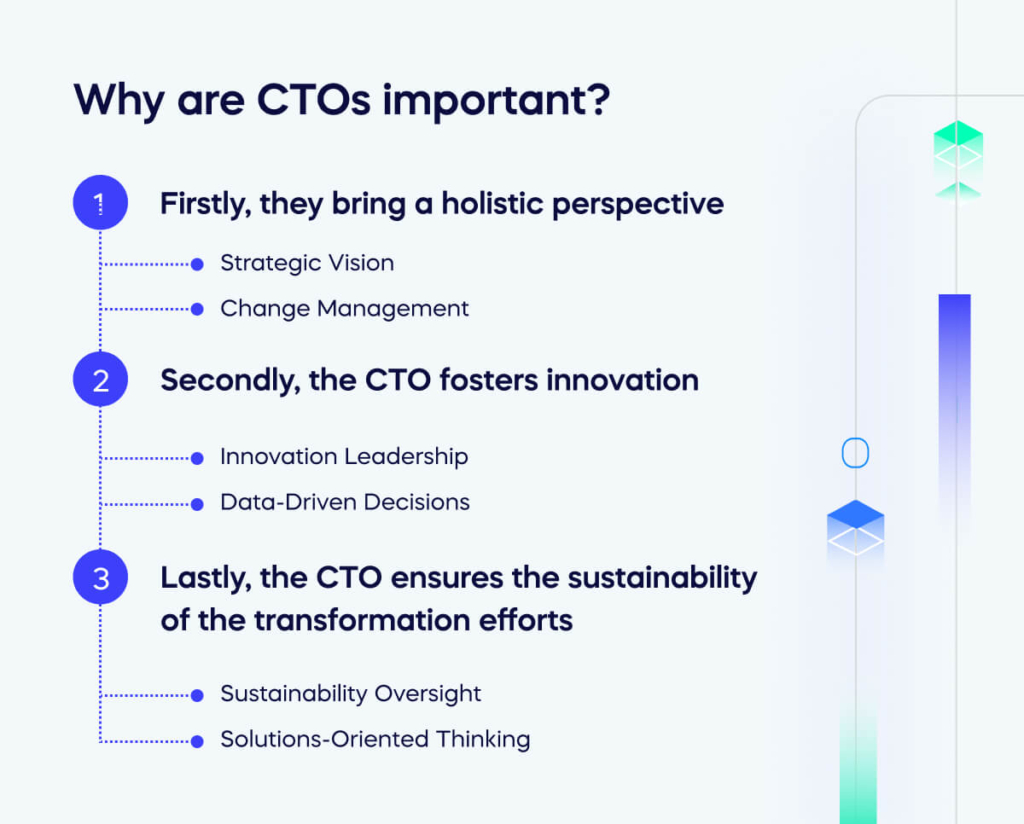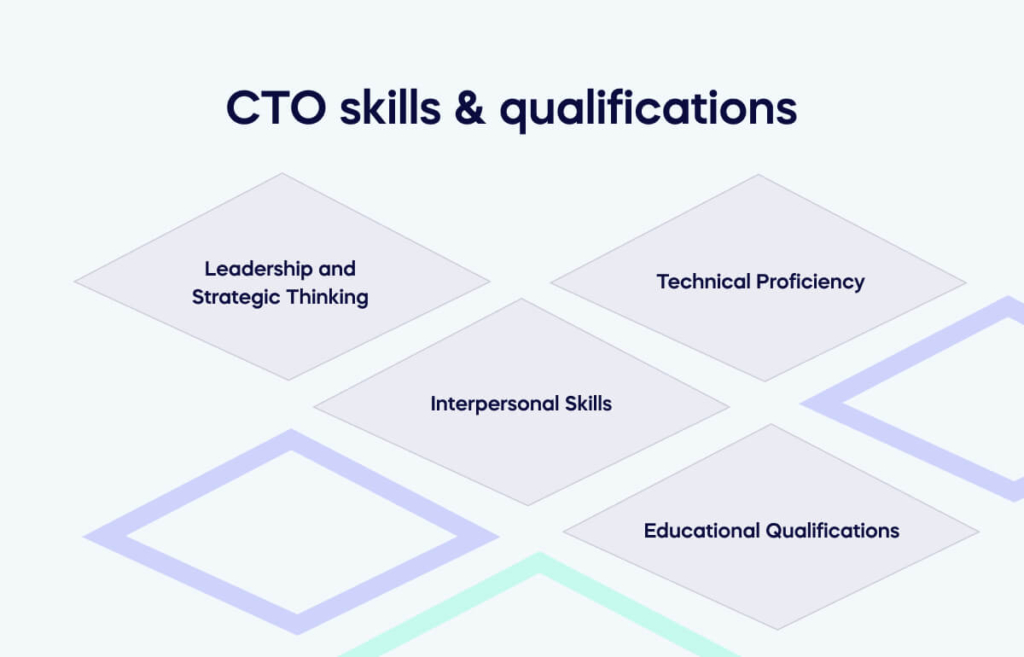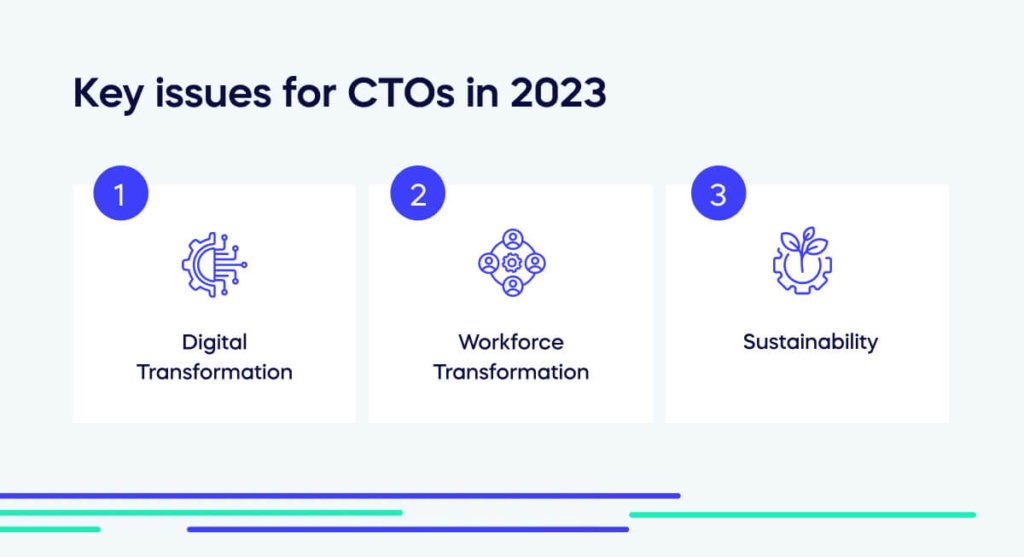Given the need to rapidly adapt and respond to changing customer, market, or technological requirements, the role of a Chief Transformation Officer (CTO) is becoming increasingly pivotal.
As the catalyst for driving significant organizational change, CTOs are no longer simply overseeing isolated projects. They are now at the forefront of implementing comprehensive, strategic change that impacts every facet of an organization.
The CTO’s role has evolved beyond traditional boundaries, expanding into digital transformation, innovation, and cultural change. They are the orchestrators of disruption, leveraging technology to reinvent business models, streamline operations, and deliver superior customer experiences. Their work is not confined to implementing new technologies; it also involves fostering a culture that embraces change and encourages innovation.
With their unique blend of business acumen and technical expertise, CTOs are guiding their organizations through the complexities of the digital age. They are the bridge between technology and business strategy, ensuring alignment and cohesion in the pursuit of transformative goals.
As we delve deeper into the era of digital disruption, the role of a CTO will continue to evolve. They will be instrumental in navigating future challenges, steering their organizations towards sustained growth and competitiveness in an ever-changing market landscape. This article explores the dynamic role of a Chief Transformation Officer in this new age of business.
Let’s embark on this journey to understand how they reshape the corporate world.
What is a CTO?

A Chief Transformation Officer (CTO) is a high-ranking executive responsible for managing and implementing significant organizational changes. Their role includes overseeing strategic initiatives, driving innovation, and leading digital transformation efforts to enhance business operations. They work closely with other executives to align transformation goals with the company’s overall vision and strategy.
The CTO plays a critical role in navigating the company through periods of growth, change, or restructuring, ensuring the successful adaptation to new business environments and technologies.
Why are CTOs important?

Chief Transformation Officer (CTO) holds a crucial role in an organization due to their responsibility for leading and implementing the company’s transformation strategies.
Firstly, they bring a holistic perspective. Unlike functional leaders who focus on specific areas, the CTO looks at the bigger picture. They understand how changes in one part of the organization can impact others and use this knowledge to guide strategic decisions.
- Strategic Vision: A CTO clearly understands the company’s strategic business priorities and the steps required to achieve them. They align these objectives with the transformation efforts, ensuring that every change contributes to the broader mission.
- Change Management: The CTO is responsible for managing change within the organization. They communicate the need for change to employees, mitigate resistance, and ensure smooth transitions.
Secondly, the CTO fosters innovation. They encourage new ideas and approaches, creating an environment where innovation thrives. This role is instrumental in maintaining a competitive edge in today’s rapidly evolving business landscape.
- Innovation Leadership: The CTO leads initiatives to foster a culture of innovation. They introduce new technologies and processes that can enhance efficiency and productivity.
- Data-Driven Decisions: The CTO relies on data to make informed decisions. They leverage analytics and insights to identify opportunities for improvement and develop effective strategies.
Lastly, the CTO ensures the sustainability of the transformation efforts. They assess the effectiveness of changes implemented and make necessary adjustments to ensure long-term success.
- Sustainability Oversight: The CTO monitors the progress of transformation initiatives and ensures their sustainability. They adjust strategies as needed to maintain momentum and achieve lasting results.
- Solutions-Oriented Thinking: The CTO adopts a solutions-oriented approach to problem-solving. They focus on finding practical, cost-effective solutions that address short- and long-term goals.
CTO skills & qualifications

Getting into the C-suite requires a special set of skills and expertise. Chief Transformation Officers should possess both business acumen and technical proficiency.
But it’s not just about what they know—CTOs must also be able to drive change within their organizations. They must be able to influence people at all levels and inspire them to embrace transformation.
We’ve identified the key skills and qualifications required for a successful CTO:
Leadership and Strategic Thinking
- Visionary Leadership: A CTO must possess the ability to influence and lead others toward achieving the company’s digital transformation goals. This includes clearly articulating the vision and strategy of the transformation process.
- Strategic Thinking: The ability to think strategically and make sound decisions based on data and insights is crucial. A CTO should be able to identify trends, anticipate future challenges, and create innovative solutions.
Technical Proficiency
- IT and Digital Literacy: The CTO should have an in-depth understanding of technological trends and digital tools. This includes knowledge of project management software, data analysis tools, and emerging technologies like AI and machine learning.
- Change Management: As the spearhead of transformation, the CTO should be skilled in change management strategies to successfully implement new processes and systems.
Interpersonal Skills
- Communication Skills: Excellent communication skills are vital for a CTO. They must communicate the transformation strategy effectively to employees, stakeholders, and partners.
- Collaboration and Teamwork: A successful CTO fosters a culture of collaboration. They should be able to work well with teams across different departments to achieve the organization’s transformation objectives.
Educational Qualifications
- Advanced Degree: A Master’s degree or higher in Business Administration, Information Technology, or a related field is often required. Some organizations may also prefer candidates with a doctoral degree.
- Certifications: Relevant IT management, project management, or change management certifications can enhance a CTO’s credibility and expertise.
The above skills are only the starting point for becoming a successful Chief Transformation Officer. The most important factor is the ability to create and lead change within an organization—a skill that requires experience and dedication.
Now that we’ve explored the role of a Chief Transformation Officer, let’s look at how it will change in the future.
Chief transformation officer vs. Chief technology officer
The business world is changing at an unprecedented pace, and organizations are increasingly seeking to adapt and evolve.
Two crucial roles that have emerged in this context are the Chief Transformation Officer (CTO) and the Chief Technology Officer (CTO). Although these positions share an acronym, their responsibilities and focus vastly differ.
The Chief Transformation Officer, a relatively recent addition to the corporate landscape, is an executive who focuses on driving change within an organization. This role plays a vital part in enhancing the likelihood of a successful transformation.
A chief transformation officer is essentially a business generalist, wielding a robust emotional toolkit to ask pertinent questions and drive innovation. They act as an integrator, fortifying the organization’s capacity for change and fostering leadership behaviors that ensure sustainable results. Their primary responsibilities revolve around transforming traditional organizational resources, such as people, data, and infrastructure, in a cross-functional manner to stimulate growth and adaptation.
Meanwhile, the Chief Technology Officer, a more established role, is responsible for all things technology within a company. This includes managing IT infrastructure, developing and implementing technology strategies, and ensuring the organization’s technological capabilities align with its business goals. The chief technology officer plays a vital role in leveraging technology to enhance efficiency, productivity, and competitive advantage.
Both the CTO roles are pivotal in a modern business environment, each bringing a unique perspective and expertise. While the Chief Transformation Officer drives overall organizational change and innovation, the Chief Technology Officer ensures that technology serves as a catalyst for this transformation.
Unfolding the future: The evolution of the CTO role
In the dynamic landscape of business, the Chief Transformation Officer (CTO) has undergone a significant metamorphosis. As the vanguard of change within an organization, the CTO is tasked with setting strategic direction and stirring enthusiasm while challenging existing paradigms.
This role extends beyond overseeing the implementation of new technologies or systems. It involves building the organization’s capacity for change and nurturing leadership behaviors that ensure sustainable results. The CTO is the bridge between the present and the future, harnessing organizational change to drive growth and innovation.
A key part of the CTO’s mandate is to advance the company’s value-creation agenda. This requires a deep understanding of the business and its ecosystem, identifying opportunities for improvement, and defining strategies to seize them. The CTO also plays a crucial role in driving organizational cultural change. The CTO can motivate individuals to contribute to the transformation effort by fostering a sense of belonging among employees.
The skill set required for a successful CTO is multifaceted. Beyond robust business acumen and problem-solving abilities, a high emotional quotient and strong interpersonal skills are essential. Persistence, flexibility, and the ability to act as a role model are also key traits. The CTO must be comfortable with ambiguity and constant change, embodying the qualities they seek to instill within the organization.
Looking ahead, the role of the CTO is set to become even more pivotal. As businesses grapple with the challenges of digital transformation and the relentless pace of technological change, the need for leaders who can navigate this complex terrain is paramount. The future CTO will not just be a catalyst for change but will build an inherent ‘changing capability’ within the business. This involves creating an environment that welcomes change, adapts swiftly, and continually seeks improvements.
The role of the CTO is evolving from a traditional technologist to a strategic change leader. This shift necessitates a blend of technical expertise, business acumen, and people skills. As the pace of change accelerates, the CTO’s role in guiding organizations through their transformation journeys will become increasingly important.
Key issues for CTOs in 2023

A number of key issues will affect CTOs in the years ahead. These are a testament to the ever-changing nature of the role and serve as a reminder of the need for continual learning. It’s becoming increasingly essential for CTOs to stay ahead of the curve by continuously updating their skillset and honing their leadership abilities.
We’ve identified some of the major challenges that CTOs may face in 2023:
1. Digital Transformation
- Importance: In the digital era, it’s imperative for CTOs to spearhead the adoption of new technologies and digital strategies. A failure to adapt could result in falling behind competitors.
- Key Focus Areas: Harnessing the power of Artificial Intelligence (AI), Machine Learning, and Data Analytics to drive operational efficiency and create new business opportunities.
2. Workforce Transformation
- Importance: The rise of remote work mandates organizational structure and culture changes. CTOs are responsible for creating a flexible and inclusive work environment.
- Key Focus Areas: Investing in digital tools that facilitate effective collaboration and communication and policies that promote work-life balance and inclusivity.
3. Sustainability
- Importance: With increasing global attention to climate change, CTOs must guide their organizations toward sustainable practices.
- Key Focus Areas: Initiatives could include reducing the company’s carbon footprint, transitioning to renewable energy, or developing eco-friendly products.
The pace of change in today’s business world is rapid, requiring constant vigilance and adaptability. By focusing on digital and workforce transformation and sustainability, CTOs can help their organizations navigate the complexities of the modern business landscape.
In a nutshell, the Chief Transformation Officer of the future will require diverse skills to successfully lead organizations through their digital transformation journeys. The CTO must be an effective leader, a forward thinker, and a skilled communicator. They must have the confidence to challenge conventions while empowering their workforce to embrace change.
With these qualities, the CTO can ensure a successful transformation and become an integral part of the organization’s long-term success.


